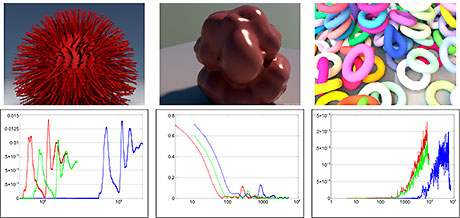The goal with his research is to animate interactive deformable body dynamics in an accurate and realistic way, like for example clothes, the body work of a car, or video games.

The computation of the animations needs to be faster
– Despite recent scientific developments, today it is not possible to simulate simple, everyday life actions such as folding a virtual blanket in real time, Marco says. There is a big interest among designers to make things in virtual reality since it is cheaper than building a prototype. But the problem is that animations still might take a very long time to create.
– A one-minute-long computer-animated movie can be computed for several hours, sometimes days. The challenge is to make the animation accurate but fast.
Marco demonstrates two animations on his computer screen and compares them.
– This is the same animation, the first one with conventional computer animation techniques and the second one is using my own technique. Same animation, the only difference is that my own version is ten times faster.
Wants to improve mechanical accuracy
Interactive deformable body dynamics can be applied in many different fields, one of them is surgical training for medical students.
One of Marco’s aims is to make possible showing the interaction between the surgeon’s hands in virtual reality and also to feel the actual resistance in the tissue through a robotic arm.
Today these kind of systems are not mechanically accurate.
The problem with accuracy in an animation can for example be a walking person, who's joints are not moving fluent enough to make the movement look natural. The knee structure, for example, slightly collapses when the person moves forward. A problem which Marco also has solved.
– I use maths and physics as a brush and colour and the computer as canvas. It takes a lot of creativity and imagination to do these kind of things, he says.
Marco will use the research grant for novel investigations in the field in order to obtain accuracy and interaction at the same time.
– I would like to acknowledge the Swedish Research Council, all the nice people at the Department of Applied IT and at the Division of Interaction Design.
